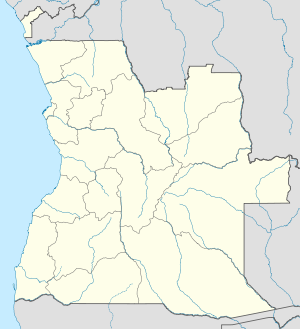- Operation Modular
-
Operation Modular (AKA Moduler) was a military operation by the South African Defence Force (SADF) during the South African Border War. It formed part of what has come to be called the Battle of Cuito Cuanavale.
In August 1987, four brigades of the Soviet-backed[1] FAPLA forces (the 47th, 59th, 16th and 21st brigades), departed from the Angolan city of Cuito Cuanavale with the aim of capturing the UNITA stronghold at Mavinga, which was the gateway to Jonas Savimbi's capital of Jamba.
The presence of an armoured formation in the form of FAPLA's 47th Brigade was a threat that the relatively lightly armed UNITA could not counter, so it requested assistance from the SADF. South Africa responded by sending a mechanized force, led by a veteran unit of Operation Askari - 61 Mechanized Battalion. This force left the South-West African town of Rundu, crossed the border and headed north-west to intercept the 47th Brigade.
The South African force, under the command of Colonel Deon Ferreira, was tasked with carrying out three operations:
- Operation Modular - The aim of which was to halt and reverse the FAPLA advance on the UNITA strongholds of Mavinga and Jamba.
- Operation Hooper - The aim of which was to inflict maximum casualties on the retreating FAPLA forces after they had been halted.
- Operation Packer - The aim of which was to force the FAPLA forces to retreat to the west of the Cuito River.
The FAPLA forces did not expect the South Africans to attack directly from the south, resulting in the virtual destruction of the 47th Brigade when the two forces encountered each other near the junction of the Lomba and Cuzizi rivers. This left the FAPLA forces without a screening element south of the Lomba River. At the same time, there was also heavy fighting north of the Lomba River when UNITA forces (composed of the 3rd Regular, 5th Regular, 13th Semi-Regular and 275th Special Forces Battalions[2]) repulsed an attempt by FAPLA's 16th Brigade to capture Cunjamba.
In the wake of these victories, the South African/UNITA forces mopped up the FAPLA survivors in the Lomba-Cuzizi-Conzumbia area and then went over to the offensive in order to push the rest of the FAPLA forces back to Cuito Cuanavale.
Indeed, the battle at Lomba River was the first full-scale tank-on-tank armored battle ever fought in southern Africa. During the battle, 62 of the 72 deployed T-55 tanks were either destroyed or captured, while the remaining 10 were found abandoned afterwards. The South Africans had two of their tanks put out of action, but were able to repair both. The recovery, under fire, of a crippled Olifant and the subsequent re-entry of a minefield where the tank was extracted from to extract a wounded soldier, earned Captain Petrus van Zyl and Lieutenant Tobias de Vos of 32 Battalion both Honoris Crux decorations.[3]
The technological superiority of their G6 and G5 howitzers also contributed greatly to the South Africans' victory. This operation was also the first combat service of the Ratel ZT-3 variant, as well as the first deployment of the Olifant main battle tank in Angola.
After the FAPLA offensive had been stopped, the South African/UNITA force went over to the offensive, thus ending Operation Modular and beginning Operation Hooper.
Operation Modular raised the issue of the relevance of a command structure that was centralized in Pretoria, allowing limited freedom in decision-making by the commaning officer in the field. All decisions had to be ratified by General Kat Liebenberg, who was based in Pretoria and thus far removed from the rapidly escalating force build up in Angola. One commentator notes that Kat Liebenberg was dealing with the unraveling of Operation Katzen at the same time that Operation Modular was escalating, suggesting that this caused him to fail in his appreciation of the FAPLA build-up [4].
See also
- 32 Battalion (South Africa)
- Angolan Civil War
- List of operations of the South African Border War
- Operation Packer
- Operation Hooper
- Battle of Cuito Cuanavale
- United Nations Security Council Resolution 602
- United Nations Security Council Resolution 606
References
- ^ Helmut-Romer Heitmann; S.A.Armed Forces,1990
- ^ http://www.fireandfury.com/orbats/modunita.pdf
- ^ Nortje, Piet (2003). 32 Battalion. Zebra Press. p. 88. ISBN 9781868729142.
- ^ Turton, A.R. 2010. Shaking Hands with Billy. Durban: Just Done Publications. http://www.shakinghandswithbilly.com ISBN 978-1-920315-58-0
Categories:- Battles and operations of the South African Border War
- Conflicts in 1987
- 1987 in Angola
- 1987 in South Africa
Wikimedia Foundation. 2010.

